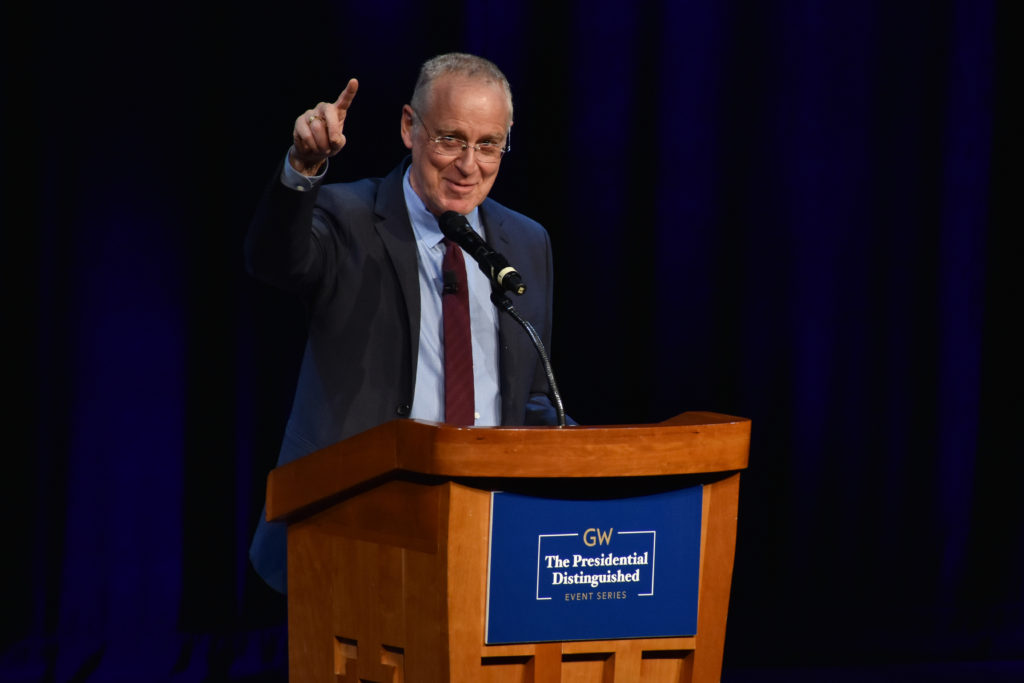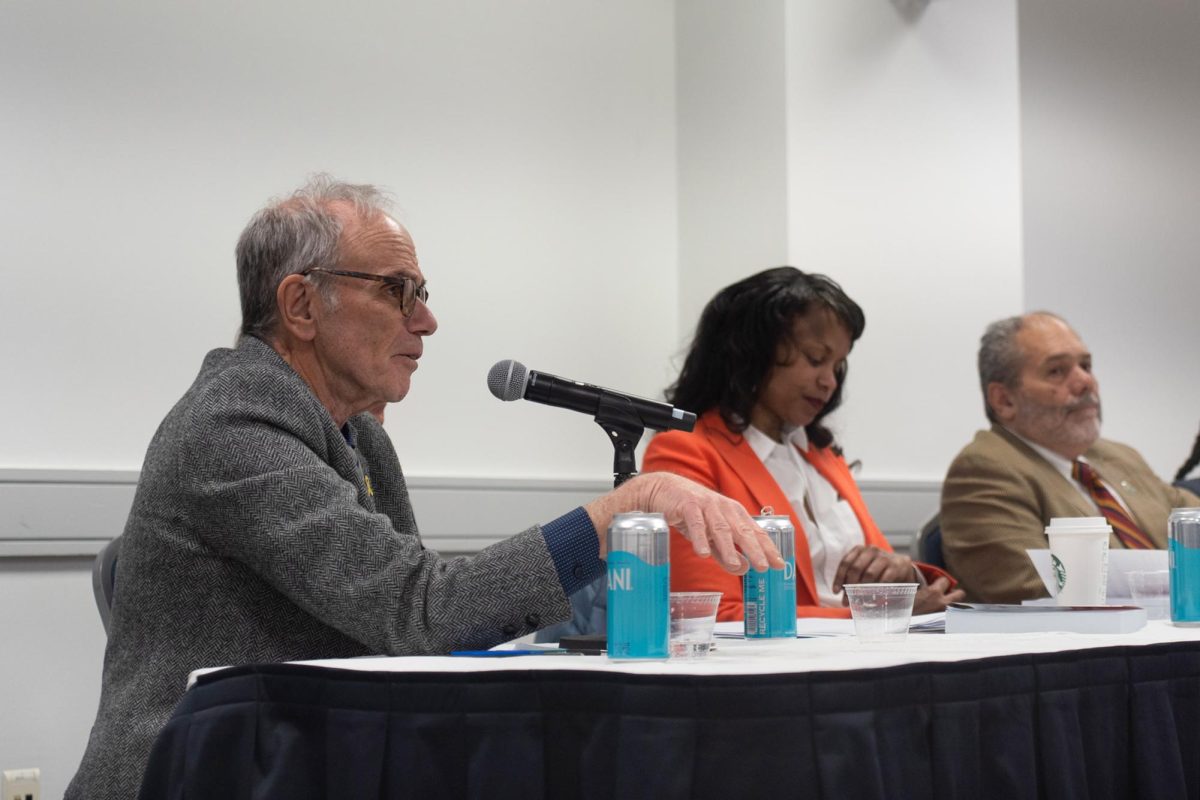Author and historian Ron Chernow spoke about his biography on Alexander Hamilton and the musical it inspired in Lisner Auditorium Wednesday.
At the event, Chernow spoke about his study of the Founding Father and his experience working alongside writer and musician Lin-Manuel Miranda to create the Broadway hit musical “Hamilton.” The event was the first installment of the Presidential Distinguished Event Series, a new administrative initiative allowing students to hear from high-profile speakers for free.
In case you missed the event, here are some highlights:
1. Studying Hamilton
Chernow said he was originally inspired to study Hamilton because the first secretary of the Treasury was present for and played a major role in many different aspects of the American Revolution.
“One of many things that attracted me to the Hamilton story was that it was the perfect prism through which to view the entire Founding era,” Chernow said. “Alexander Hamilton is not only there, but he’s very centrally involved.”
Chernow said Hamilton’s efforts to gather votes for the ratification of the U.S. Constitution at New York’s ratifying convention in 1788 helped push one of the most populous and prosperous states to sign on to the document.
“If New York had not ratified, it would have physically – if not politically and morally – split the country,” he said.
2. Creating a musical
Chernow said that after several failed attempts to create a movie based on his book, he met Miranda through a mutual friend. He said the playwright helped him see that hip-hop songs can compress an “enormous amount of information” in a few lines.
He said he served as a historical expert for Miranda while the musical was written. Instead of checking for factual accuracy throughout the play, Chernow said he provided expertise on the “essence” of the characters and their relationships.
Chernow said he was surprised when he learned the cast of the musical would consist primarily of black and Latino actors, but he said he quickly realized the diversity made the musical relevant to the racial makeup of the United States today.
“We all know the story about the changing demographics of America,” he said. “By 2040 or 2045, a group of the minorities will be the majority, and American politics is now revolving around that.”
Chernow said the director of the musical, Thomas Kail, described the cast as “18th century from the neck down” but “21st century from the neck up.”
3. Relating history to today
After his lecture, Chernow sat down with Lindsay Chervinsky, an alumna and a historian at the White House Historical Association. The two spoke about the relatable aspects of Miranda’s version of 18th-century figures who are often viewed as inaccessible.
Chernow added that teaching history with contemporary issues in mind makes the subject relevant to students in the present.
If he could ask Hamilton anything, Chernow said he would ask the Founding Father about the way his parents shaped his identity because little is known about Hamilton’s childhood.
“This man who was so verbal, he scarcely wrote a single line about the first third of his life,” he said. “It was like he slammed the door shut on the first 17 or 18 years of his life.”





